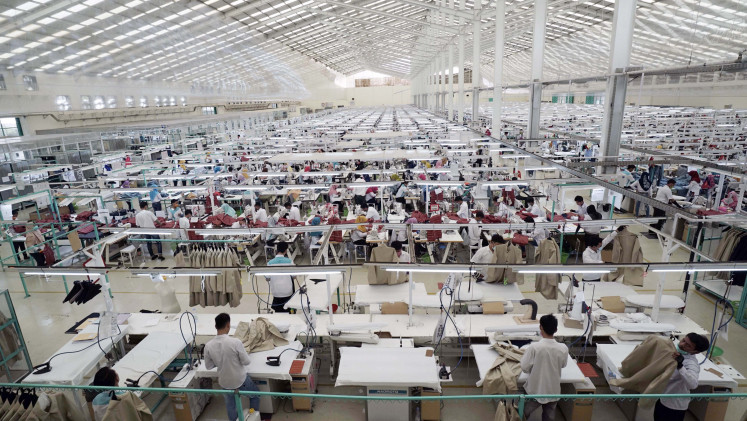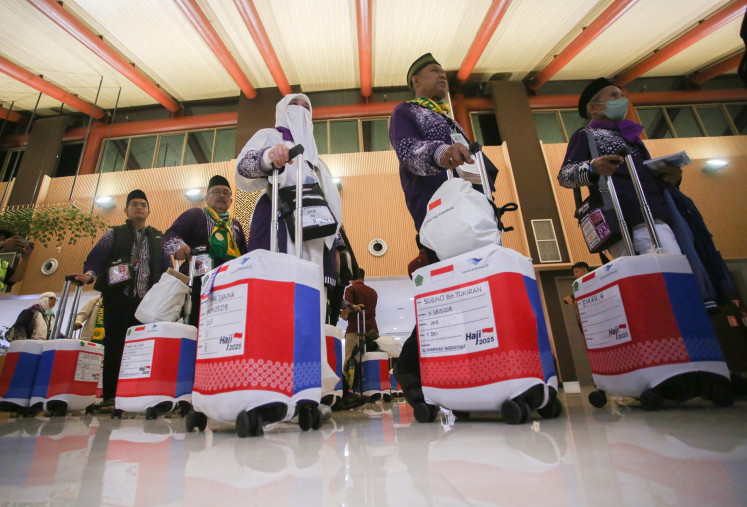AI to the rescue: Addressing shortcomings in automated data entry
Despite the progression of the internet, which has accelerated the exchange of information, paper-based operations continue to coexist with their digital counterparts.
Change text size
Gift Premium Articles
to Anyone
 In developed countries such as the United States, which is widely known as a first adopter in many cutting-edge technologies, data entry jobs will still be in demand over the next decade, signaling that regardless of digital transformation efforts, acquisition of offline data remains a challenging task to disrupt. (Shutterstock/EM Karuna)
In developed countries such as the United States, which is widely known as a first adopter in many cutting-edge technologies, data entry jobs will still be in demand over the next decade, signaling that regardless of digital transformation efforts, acquisition of offline data remains a challenging task to disrupt. (Shutterstock/EM Karuna)
D
ata entry and extraction are tedious and time-consuming work that requires concentration at all times with focused dexterity and accuracy.
Despite the progression of the internet, which has accelerated the exchange of information, paper-based operations continue to coexist with their digital counterparts.
In developed countries such as the United States, which is widely known as a first adopter in many cutting-edge technologies, data entry jobs will still be in demand over the next decade, showing that regardless of digital transformation efforts, acquisition of offline data remains a challenging task to disrupt.
Businesses and industries in banking and finance, logistics, health care, insurance and government rely on much offline-based information found in scanned and handwritten documents in varying degrees of complexity in order to give access to services or gain information from siloed sources. For example:
- Banking and other financial service institutions require information from new customers that is typically submitted in the form of proof of identity and other personal information stored offline;
- Logistics companies may need to extract data from commercial invoices and courier reports, delivery notes and receipts, and freight bills;
- Medical institutions must extract information from certificates, medical records, doctor’s notes and identity documents to key in bills or update a patient’s medical history;
- Archival data collected over the years that if digitized, may serve as a treasure trove of untapped data.
By applying forms of automation, companies enable themselves to cut their processing time to better serve their customers or improve efficiencies where bottlenecks in business processes often occur.
Read also: Microsoft Excel now converts your photos to digital spreadsheets
Up to recently, automated data entry existed in a controlled environment. Past automation solutions employ template-based extraction and are only cost-effective in narrow situations where a large degree of uncertainty can be reduced. Documents were required to be digitized in a flatbed scanner and data fields were collected from specific coordinates within the digital image. If, say, a slight angle was created during scanning, the position of these data fields would consequently change and cause the extraction to fail.
Additionally, for every new type of document, users must reintroduce a template of where an item is located. For example, invoices vary from one another depending on type of business or purchase. Each time a new invoice comes in, a template-based will be unable to recognize the format and the user must program the template. Textual data in such documents may also exist as handwritten notes that current optical character recognition (OCR) technology may have difficulty transcribing.
To address such shortcomings, new types of algorithms and technology have come to surface. Deep learning, a subset of artificial intelligence, utilizes large amounts of data to learn about patterns and features contained in the dataset to achieve or maximize a goal. In the context of data entry and extraction, a user no longer needs to introduce a new template for every new document. The algorithm learns from context and parses through each document to acquire target data fields. This way, field items such as a date and address or a billed amount can be obtained with minimum effort.
This technology also improves OCR accuracy by enabling transcription of text from images that were captured in unideal conditions, such as a photo from a low-resolution camera or scanned with skewed. These AI-powered algorithms can extract information with better accuracy and less user-interaction, thus speeding up processing and decision-making time.
With newly equipped OCR and information extraction that offers more robust performance, companies can quickly sort, extract and route information to its intended recipient or location with less friction and better accuracy.
By leveraging emerging technologies such as AI-powered data entry automation, businesses can save time, money and allocate their staff to focus more on work that requires human intellect and empathy to maximize service and customer satisfaction. (kes)
***
Lintang Sutawika is CEO and cofounder of Konvergen AI, an AI company that builds AI-powered enterprise software to automate the data entry process. He also oversees the development of machine learning models that power the company's products and services.










